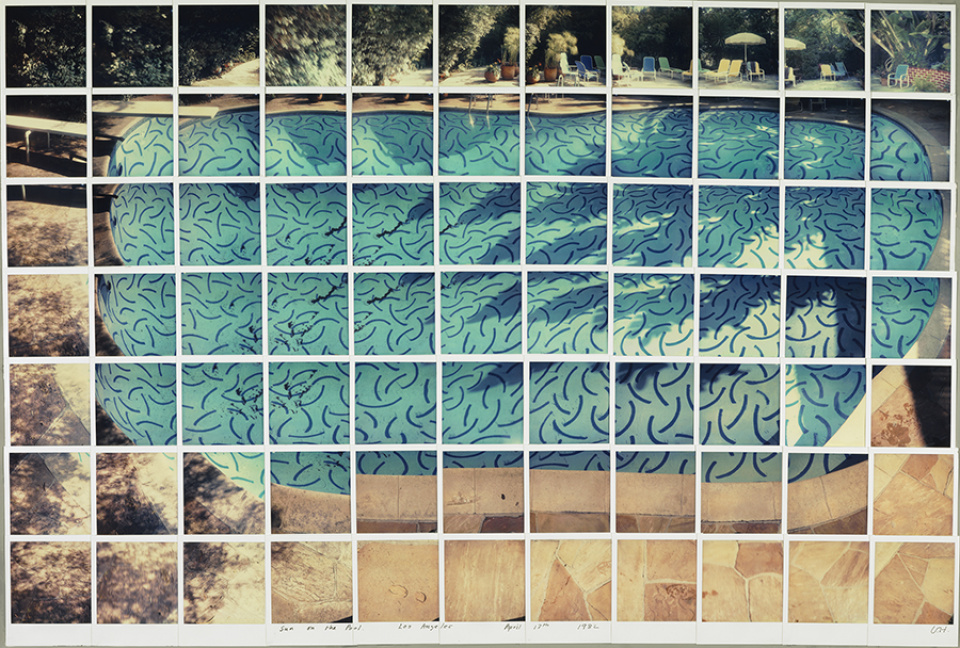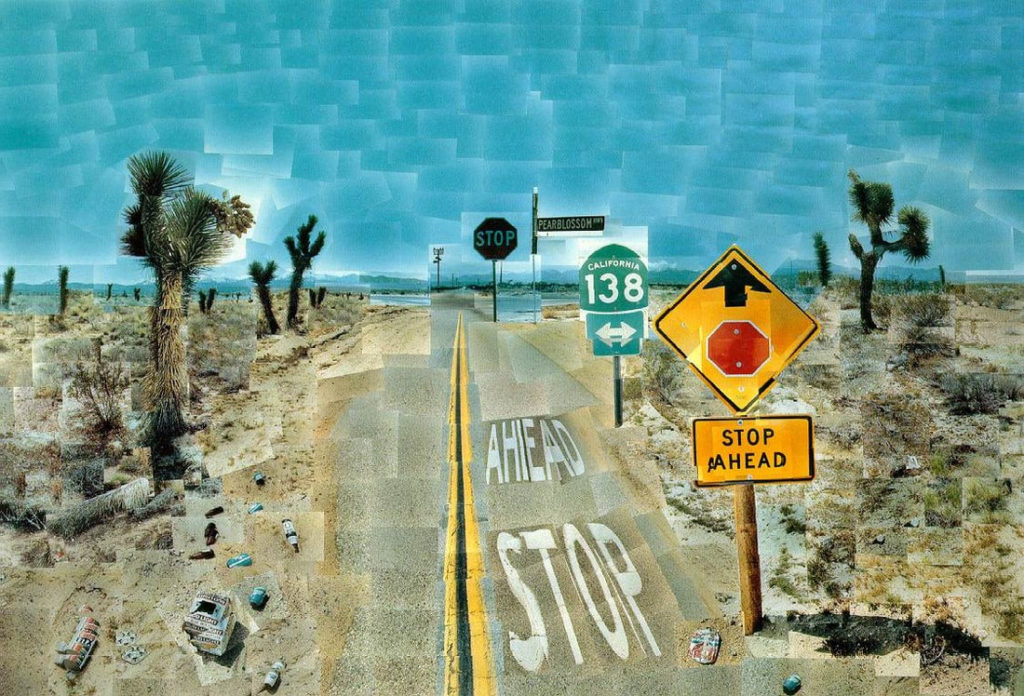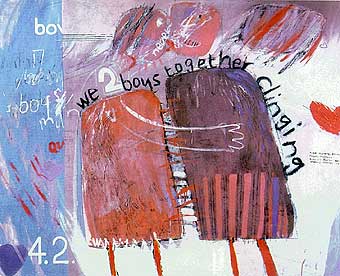


One of Hockney’s most famous joiners, ‘Pearblossom Highway’, which consisting of around 800 pictures. Every photo for this image was taken at completely different viewpoints, not just one central one. He took photos from all different positions such as up, down, sideways etc. Hockney ended up taking close ups of areas, as to make the viewer feel close and involved with the photograph. Hockney’s friends ended up thinking that this image was a painting rather than photography.

David Hockney (born 9 July 1937) is an English painter, draftsman, printmaker, stage designer, and photographer. As an important contributor to the pop art movement of the 1960s, he is considered one of the most influential British artists of the 20th century.
Hockney has owned residences and studios in Bridlington, and London, as well as two residences in California, where he has lived intermittently since 1964: one in the Hollywood Hills, one in Malibu, and an office and archives on Santa Monica Boulevard in West Hollywood, California.
On 15 November 2018, Hockney’s 1972 work ‘Portrait of an Artist (Pool with Two Figures)‘ sold at Christie’s auction house in New York City for $90 million (£70 million), becoming the most expensive artwork by a living artist sold at auction. This broke the previous record, set by the 2013 sale of Jeff Koons’ Balloon Dog (Orange) for $58.4 million. Hockney held this record until 15 May 2019 when Koons reclaimed the honour selling his ‘Rabbit‘ for more than $91 million at Christie’s in New York.

David Hockney was originally famous for his paintings rather than his photography. He always returned to painting portraits throughout his career. From 1968, and for the next few years, he painted portraits and double portraits of friends, lovers, and relatives just under life-size in a realistic style that adroitly captured the likenesses of his subjects.

David Hockney’s Joiners
In the early 1980s, Hockney began to produce photo collages—which in his early explorations within his personal photo albums he referred to as “joiners” – first using Polaroid prints and subsequently 35mm, commercially processed colour prints. Using Polaroid snaps or photolab-prints of a single subject, Hockney arranged a patchwork to make a composite image. Because the photographs are taken from different perspectives and at slightly different times, the result is work that has an affinity with Cubism, one of Hockney’s major aims—discussing the way human vision works. Some pieces are landscapes, such as ‘Pearblossom Highway #2‘, others portraits, such as Kasmin 1982, and ‘My Mother, Bolton Abbey, 1982‘.
Creation of the “joiners” occurred accidentally. He noticed in the late sixties that photographers were using cameras with wide-angle lenses. He did not like these photographs because they looked somewhat distorted. While working on a painting of a living room and terrace in Los Angeles, he took Polaroid shots of the living room and glued them together, not intending for them to be a composition on their own. On looking at the final composition, he realised it created a narrative, as if the viewer moved through the room. He began to work more with photography after this discovery and stopped painting for a while to exclusively pursue this new technique.
Hockney has experimented with painting, drawing, printmaking, watercolours, photography, and many other media including a fax machine, paper pulp, computer applications and iPad drawing programs. The subject matter of interest ranges from still lifes to landscapes, portraits of friends, his dogs, and stage designs for the Royal Court Theatre, Glyndebourne, and the Metropolitan Opera in New York City.

Over time, however, he discovered what he could not capture with a lens, saying: “Photography seems to be rather good at portraiture, or can be. But, it can’t tell you about space, which is the essence of landscape. For me anyway. Even Ansel Adams can’t quite prepare you for what Yosemite looks like when you go through that tunnel and you come out the other side.” Frustrated with the limitations of photography and its ‘one-eyed’ approach, he returned to painting.

This was one of Hockney’s famous joiners named ‘The Crossword Puzzle’. It was a photograph of two of Hockney’s close friends and every photo taken of them was taken at a different time. He wanted to showcase the variety of emotions highlighted over a certain period of time. He quoted ‘The space is the illusion, but the time is not an illusion’. Also stating that ‘It’s real and accounted for in the number of pictures’, ‘You know it took time to take them, wait for them, put them down’. He explains how time is obviously highlighted throughout the process and the image itself as it displays the different amounts of emotions.
He explains more about the ‘Crossword Puzzle’ photograph in this video.
